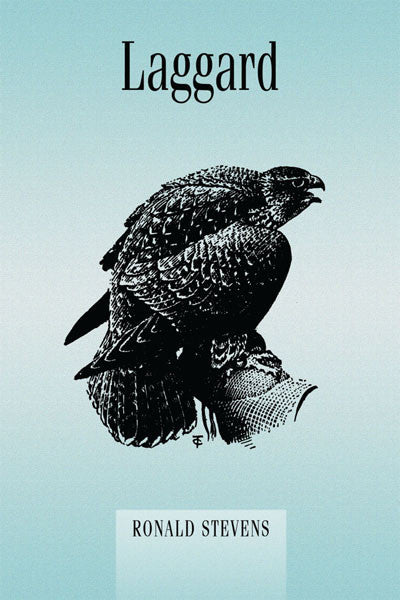

Laggard
Details
By: Stevens, Ronald, Allderbridge, Brian
ISBN: 9780888396990
Binding: Trade Cloth
Size: 9" X 6"
Pages: 312
Photos: 0
Illustrations: 12
Publication Date: 2010
Description
PR Highlights: Now Available! Reprint of a falconry classic.
Description: In this first book by Ronald Stevens, published in 1953, the celebrated falconer writes with evocative charm of his life at his country estate in post-war Britain.
A reprint of famed falconer Ronald Stevens' beautifully written memoir of life on his estate in post-war Britain, his extensive journeys in Iceland in search of the gyrfalcon, and his enduring passion for the sport of falconry. The author's vivid descriptions and elegant writing transports readers to a simpler world.
Author Biography
Book Reviews
Review by Paul Manning, Amews Falconry
The Falconers & Raptor Conservation Magazine
Issue 84, Winter 2011
I should make it clear at the start that, whilst this has been written by an eminent falconer, this is NOT a falconry book. Indeed there are no significant references to falconry or birds of prey until 'part two' 138 pages in. This is by no means a criticism as there is a huge amount in the book to enjoy, but for anyone hoping to quench their thirst for falconry knowledge, this will not deliver. Written in the years immediately after the Second World War, when people had returned to a very changed England, the author describes a quiet country life, settled into a small cottage within an old family estate. Before the war the estate was renowned for its wildlife, especially the rare duck, geese and swans that lived and bred on its huge double lake. During the war, the estate, main house and grounds were requisitioned by the army and most of the bird collection destroyed. The author is now living in these changed conditions. The cottage sits beside the lake, and much of the early part of the book is his observation of the lake's current health, the birds that have returned, and those that have not, triumphant sightings and wistful comparisons with the past. There are no great events and no overall direction or conclusions. The book is more of a gentle ramble through the relatively privileged life of a country gentleman. Every detail of that life is closely observed and raised up for comment. When gentle routine is the order of the day, one's thoughts can dwell on the squeaking of a gate or the ordering of flower seeds for the coming season. Also, much of the book is that - a gentle imparting of the author's thoughts and observations, his staff, life, people, the natural world, and the 'modern' world. In the second part of the book the scene changes as the author embarks on an (in-part) unsuccessful two months holiday to Iceland, in the hope of trapping a newly fledged Jerkin. Again acute observation and elegant prose help to bring this austere landscape to life. The final chapters of the book take the reader, if he or she is a falconer, to more familiar ground. To the moor, for the grouse hawking season. And here the falconer will be very satisfied, because it is in describing the passion and emotion of falconry that Ronald Stevens excels. Through his detailed blow by blow accounts of each flight and the emotions, good and bad, that they invoke the reader becomes totally absorbed in the text which, again if a falconer, places you on that moor feeling those emotions. As with all of Ronald Stevens books the writing is elegant and quietly understated, and in consequence a very easy read. For the falconer, his passion for falconry and birds of prey is very evident when this subject is covered, and his ability to convey emotion along with the information makes reading one of his books a real joy. Before embarking on his first trip to Iceland he spent a summer's day down at the coast walking the cliff tops, where he encountered a tiercel amongst the seabirds. His description of this 'moment in time' is a great illustration of the author's skill in conveying the passion that is invoked by these magnificent creatures. 'For a long time I sat there enjoying the scene. I watched the comings and goings of individual birds. As each one came in from the sea it swung up on to its own ledge and the others paid no attention to it, for it was but one of many fitting itself into its own place. One little unit in the seething mass. Suddenly everything was transformed. A peregrine tiercel came gliding down in a long, slanting stoop that took the breath away from me. It was screaming with joy as it swept the cliff in glorious finality. It brushed arrogantly through the crowds of seabirds and came to rest, crowning a crag. I came mentally to attention...Until that moment the cliffs had rung to the tumultuous uproar of the seabirds, but with the coming of the peregrine there was a momentary hush of respect at the arrival of royalty.'
Whilst not strictly a falconry book, it is a book that most falconers would thoroughly enjoy. With the bonus that when the author does turn his sights on falconry he really does excel.
This book is very enjoyable to read and should be on every falconer's book shelf.